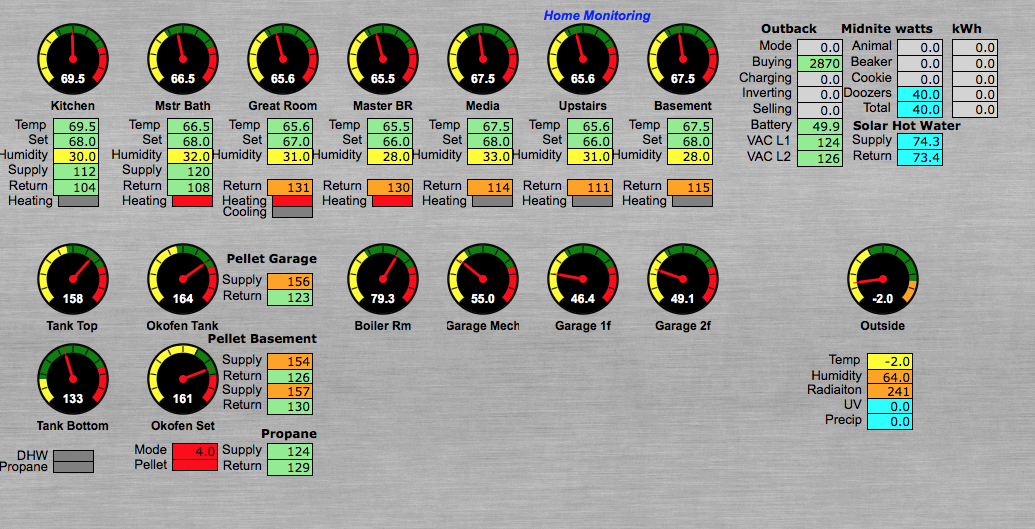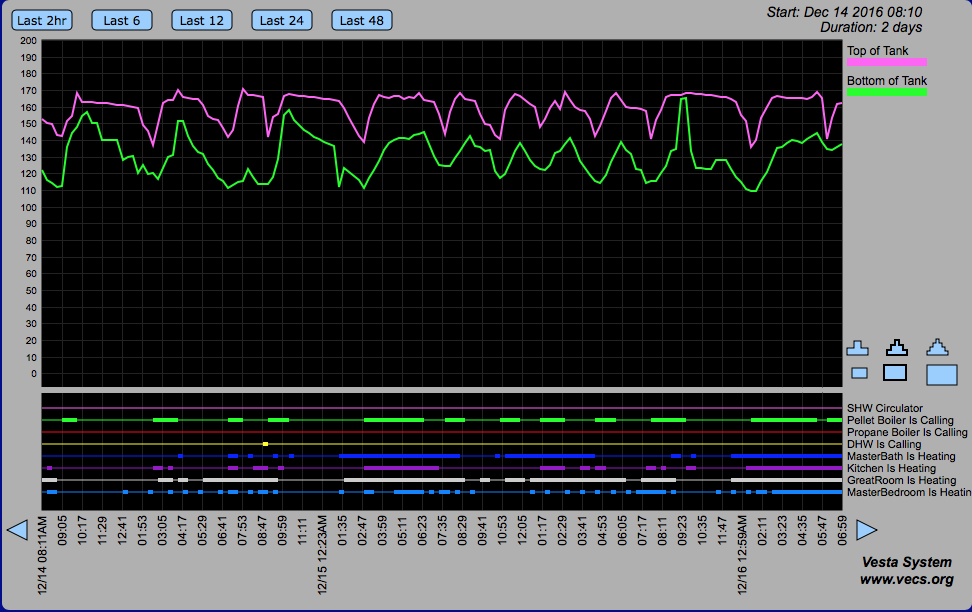Solution
The homeowner added a Vesta controller and an RI-024A relay input box to the system. The relay box allows the Vesta to monitor several devices:
- The Solar Hot Water circulator
- The Ranco thermostat that controls the Pellet Boiler
- The Propane Boiler
- The Domestic Hot Water tank aquastat
There are also two analog temperature sensors connected directly to the Vesta, measuring temperature at the top and bottom of the Water Storage Tank.
Taking advantage of the Vesta product line’s open source tools, he was able to quickly modify the Vesta’s network task to collect data from the Raspberry Pi, which in turn collects data from several other devices, including the two Arduinos, weather station, thermostats and solar equipment.
Using the tools provided with the Vesta, he built a web-based dashboard accessible from anywhere that provides a single real-time unified view into all of the elements of the environmental, heating and cooling and solar production at the house:

The Vesta also logs this data to internal storage so that it can be displayed using the built-in charting tool:

At present, the Vesta is only providing monitoring and data collection services. However, it can easily take over control over previously independent subsystems if the data shows that there’s an opportunity to improve performance or efficiency.
For instance, the Vesta would be able to avoid firing the pellet boiler early in the morning if the forecast for the day calls for plenty of sunshine, as the solar hot water system and passive solar gain in the house would be able to provide the anticipated necessary heating.
Summary
Collecting and making use of data from independent systems is a common problem.
In this example, the homeowner was able to quickly construct a consolidated dashboard while providing a foundation for more sophisticated management of the different systems in the building.
The Vesta open source tools also allowed him to easily integrate unique devices not anticipated by the manufacturer.
